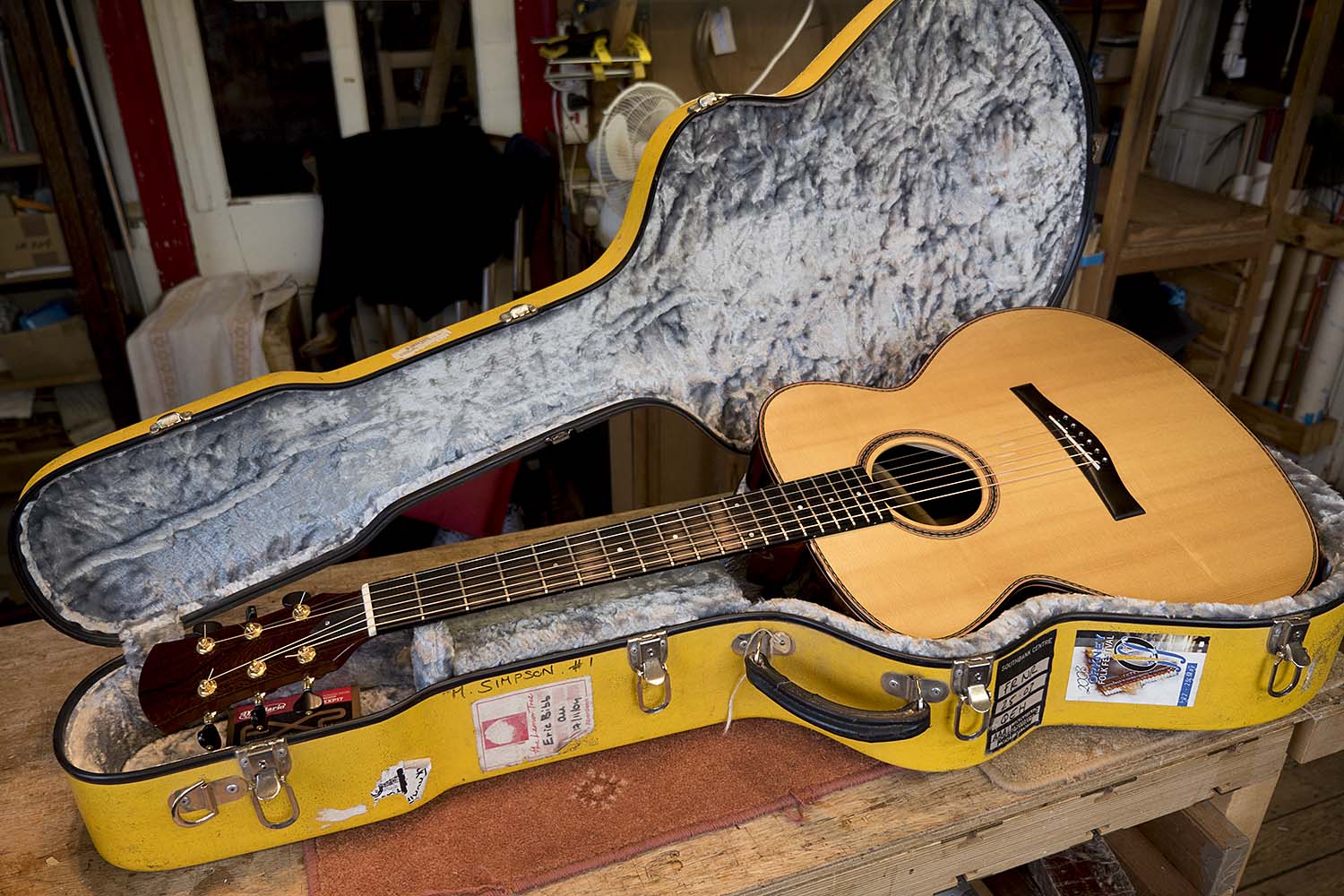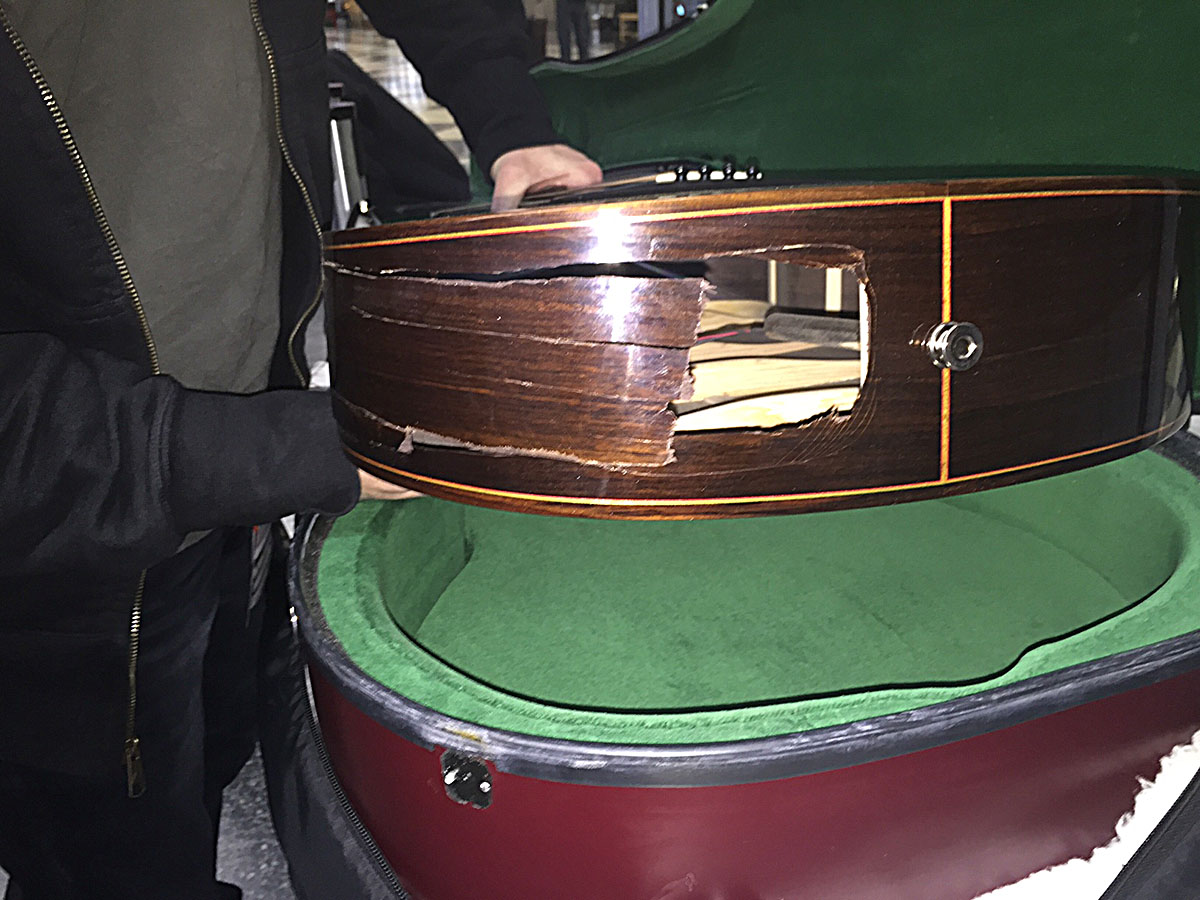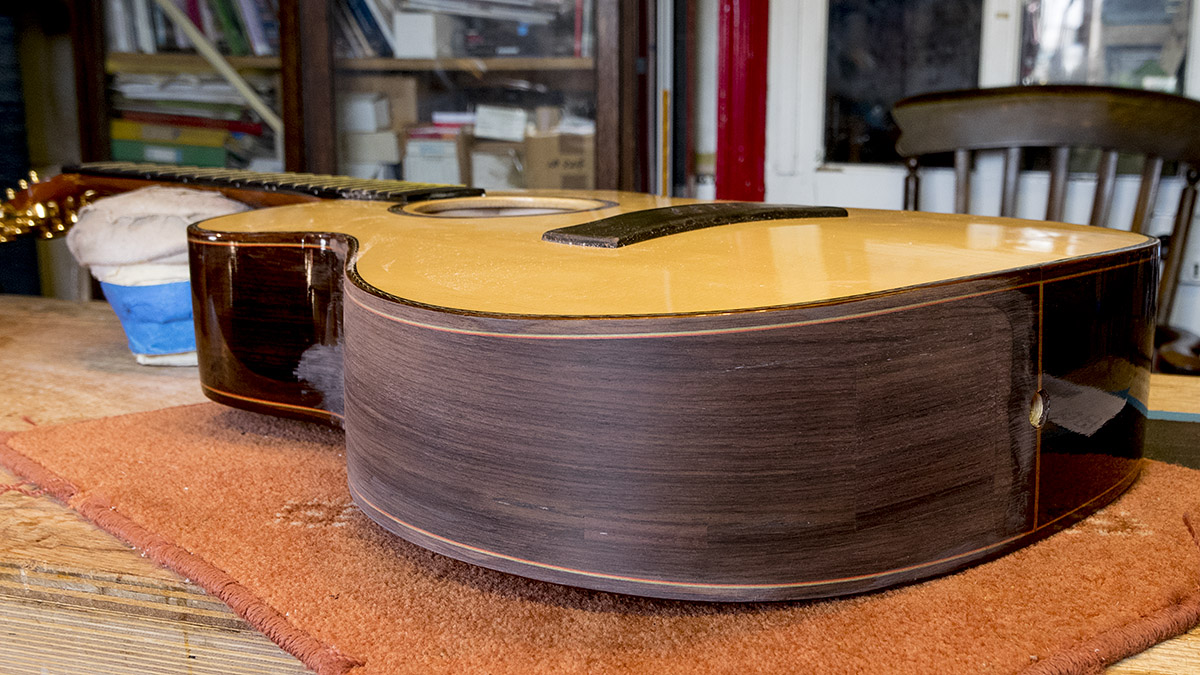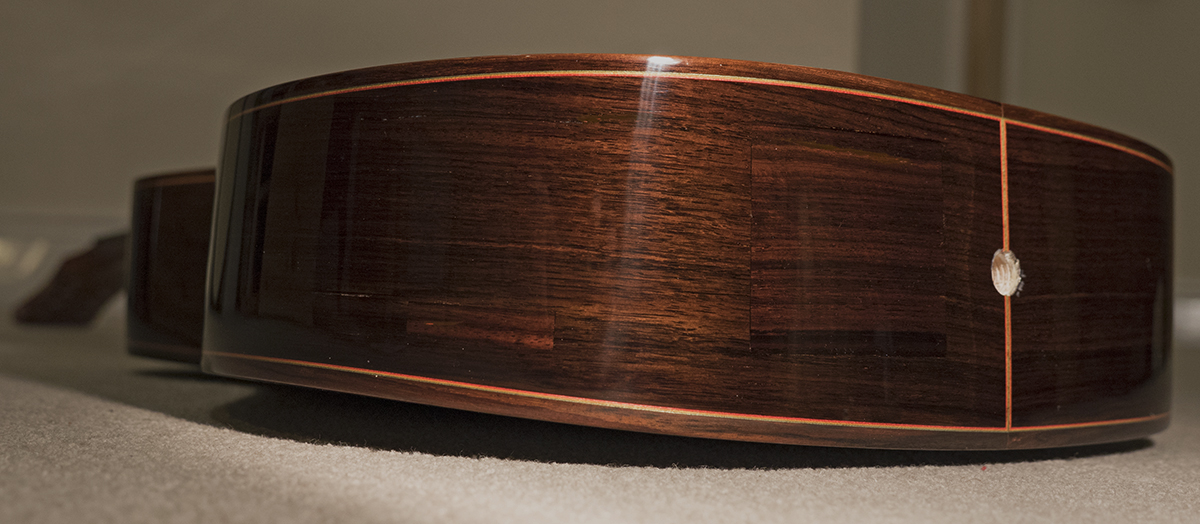Guitar headstocks are relatively easily cracked. This Model 3 (16 fret to the body) guitar belongs to Hajime Takahashi. He was in Limerick for a rehearsal, went to a restaurant in town, one of the staff offered to keep the instrument for him but knocked it and, as he put it, the head got smashed.
It was the most common damage, just where the head joins the neck. The head wasn’t right off, but was cracked most of the way through.
Gluing and clamping the crack closed was not difficult. At this point it would have been possible to sand the area clean and re-finish; glued cracks like this can be very unobtrusive. But they are also vulnerable to cracking again, usually not in exactly the same place, but a couple of millimetres away from the previous crack.
So having glued the crack, I did more. I shaved four millimetres from the back of the headstock, and tapered this to nothing about a third of the way up the neck. Then I bent a piece of four millimetre thick mahogany (matching this as closely as possible to the original wood) so that it had the correct bend to match the angle of the head to the neck.
I glued this to the neck, clamping hard, and left it overnight to dry. Next day I was able to shape the added wood to match the original neck.
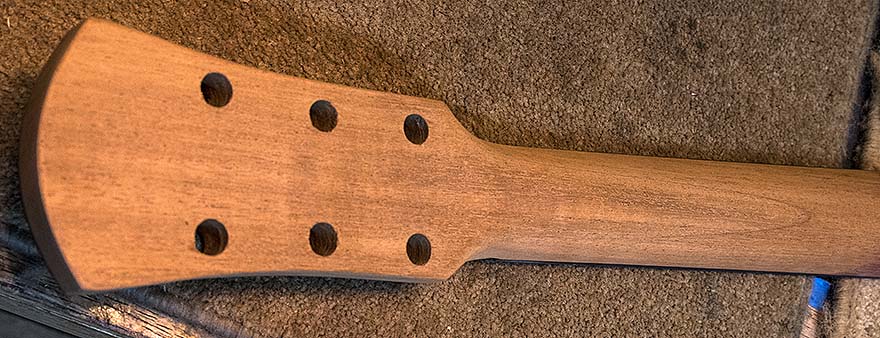
Here the new wood is glued, is shaped to the original neck profile, and the tuner holes drilled through it. The join can be seen best where the new wood feathers into the original wood on the right of the picture.
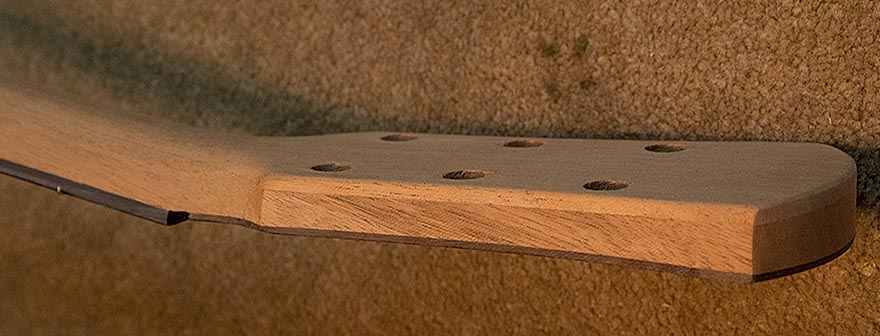
The layer of new wood is clearly visible from the side, mainly because of the different grain direction.
So now there is a layer of solid wood three to four millimetres thick covering the repaired crack, with continuous grain along its length. This gives the repair great strength.
Next the guitar goes to Dave Wilson who will re-lacquer the neck.
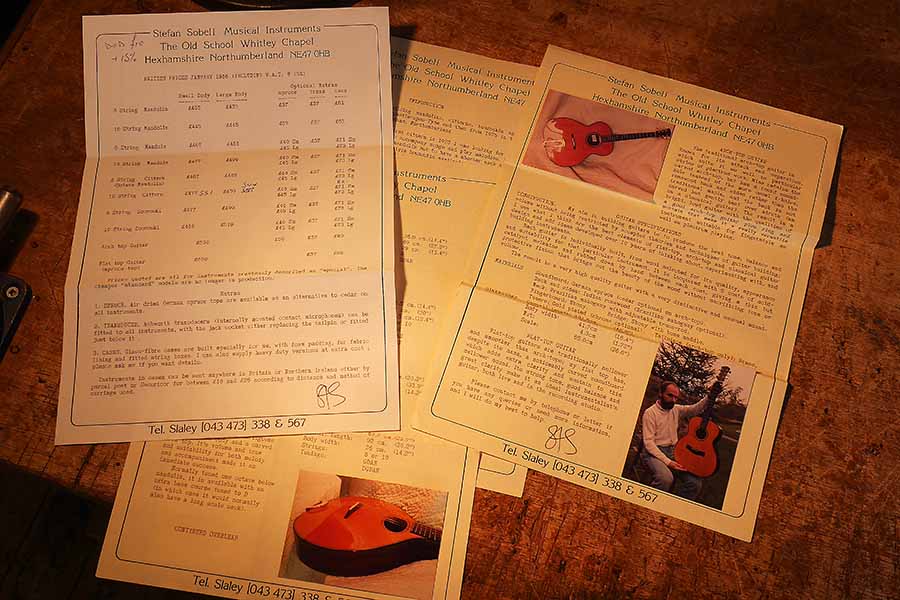
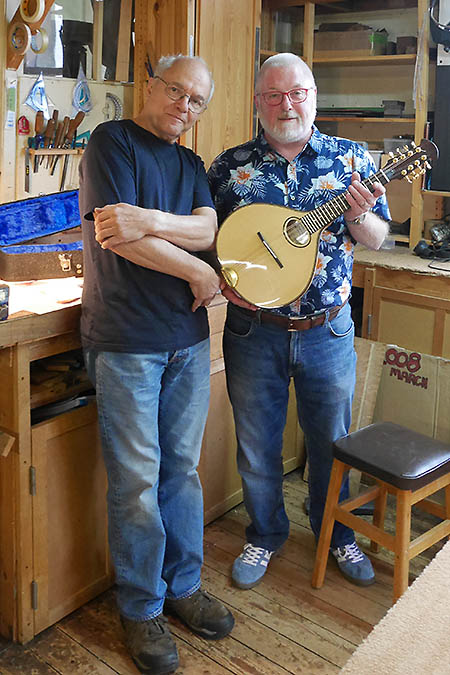
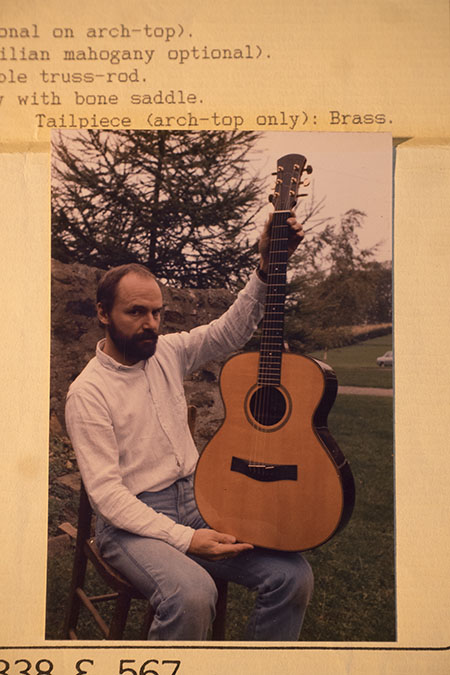

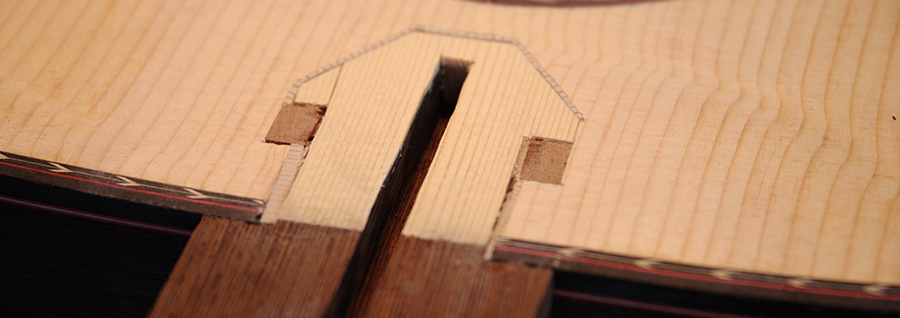
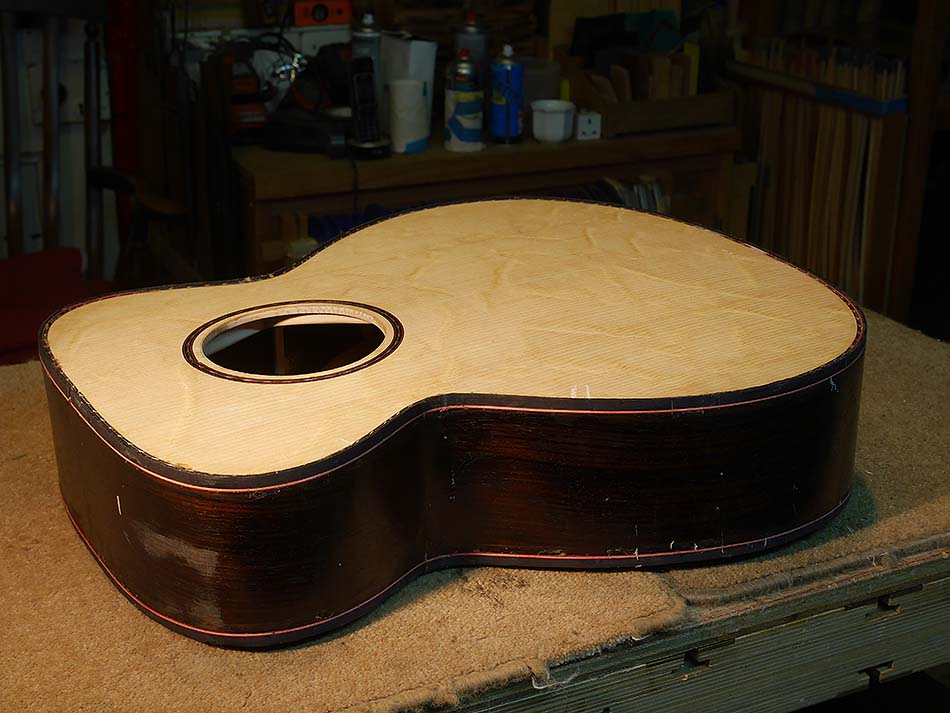


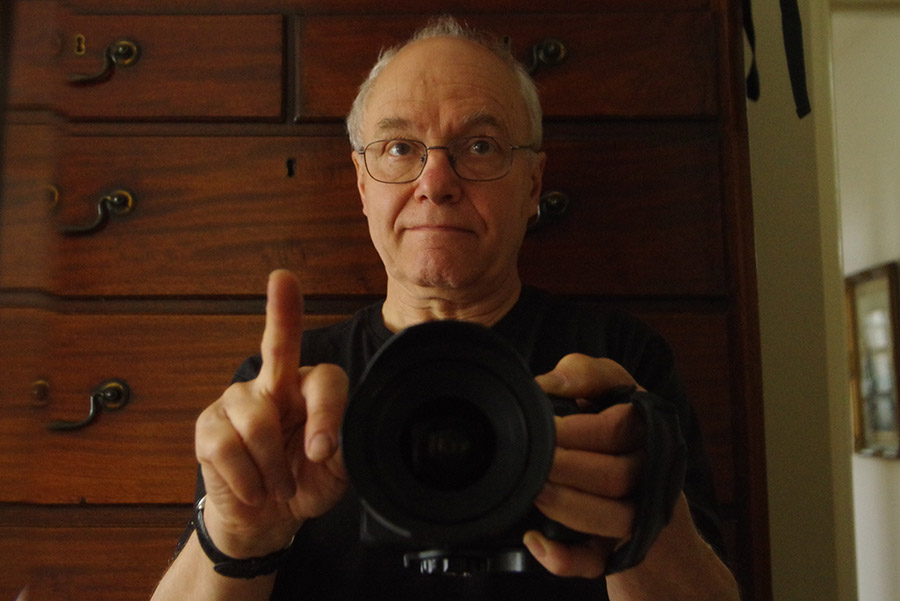
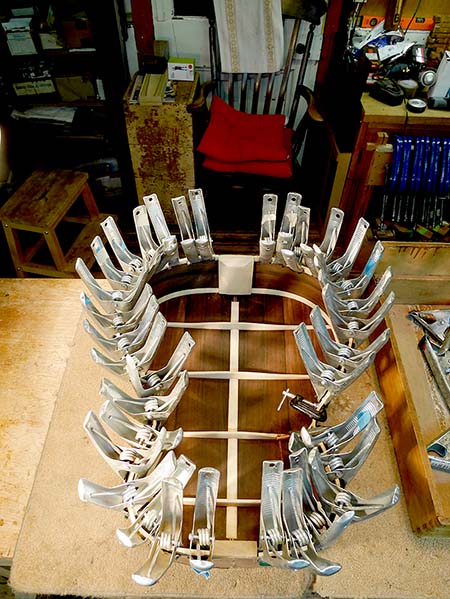 Back and sides joined and top lining clamped and gluing
Back and sides joined and top lining clamped and gluing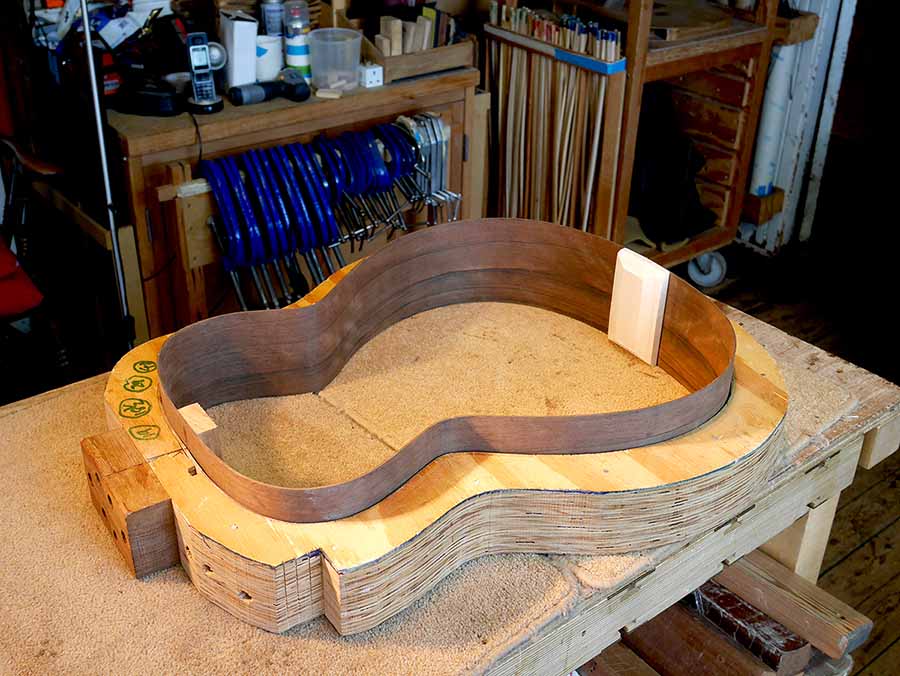 Sides bent to shape and glued to neck and tail blocks
Sides bent to shape and glued to neck and tail blocks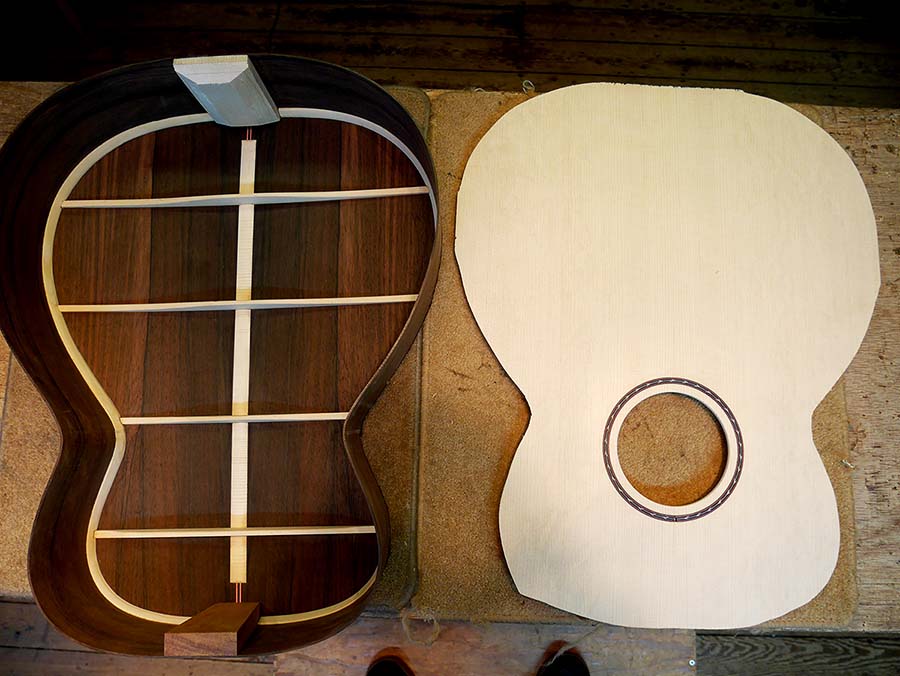 Back and sides and soundboard
Back and sides and soundboard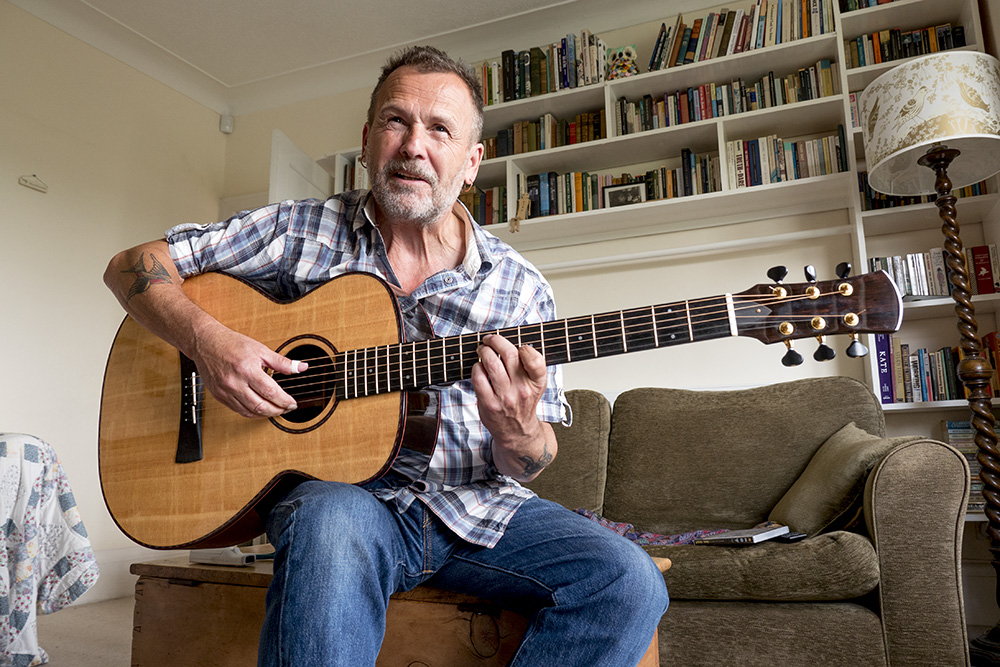
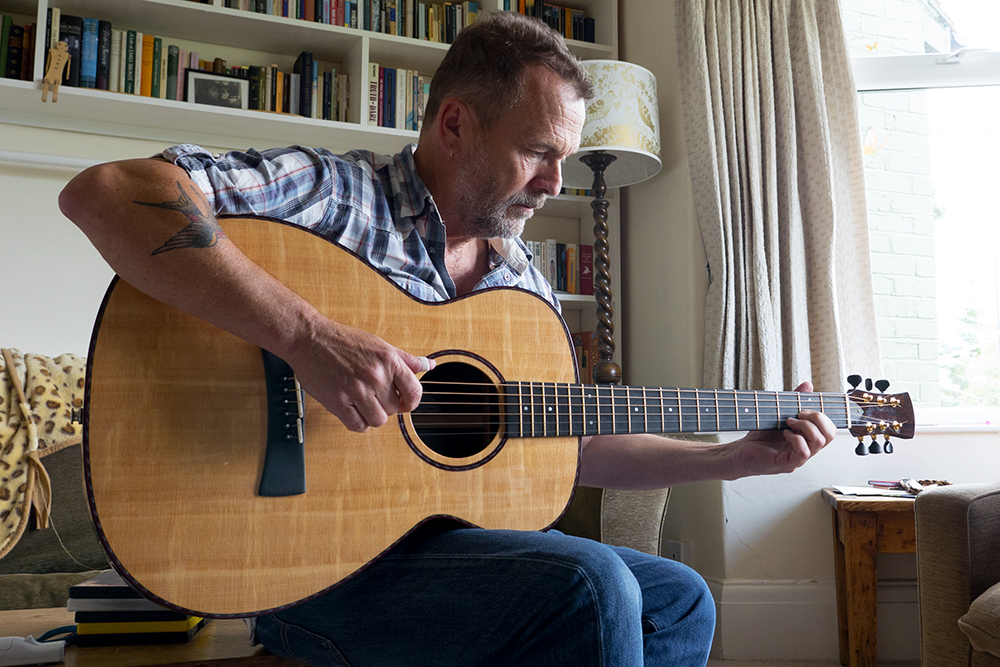
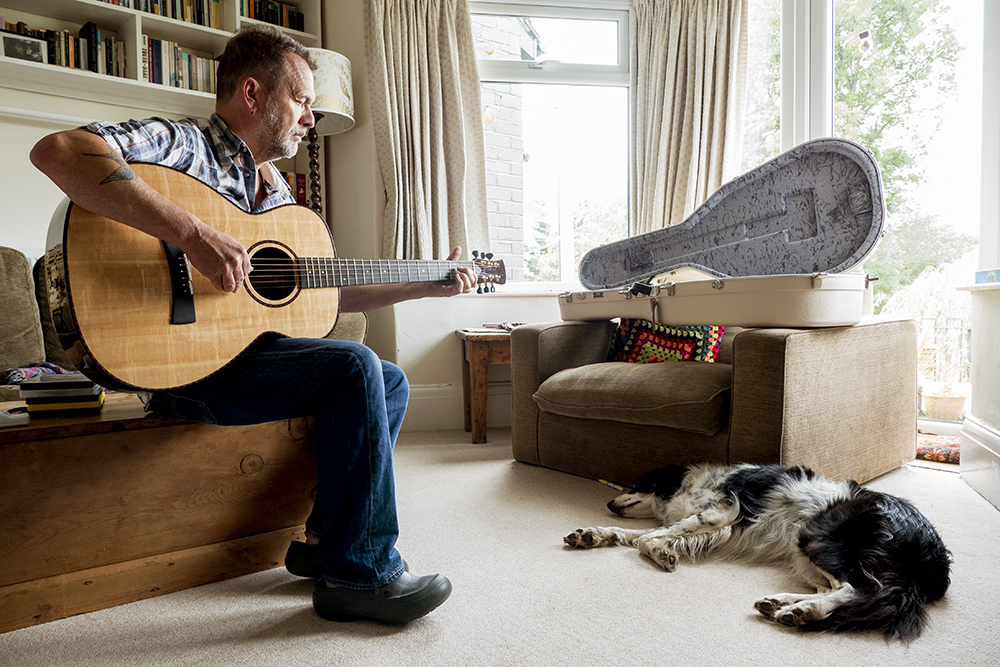
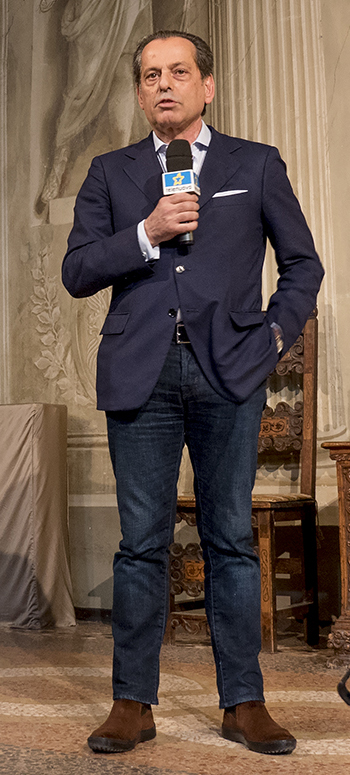 Massimo Raccosta
Massimo Raccosta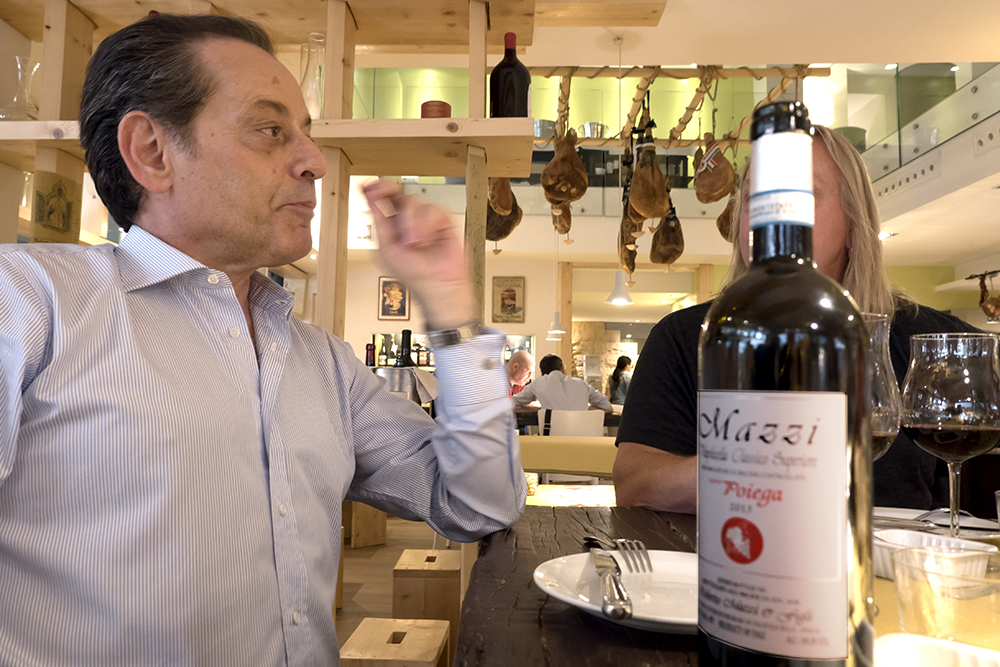
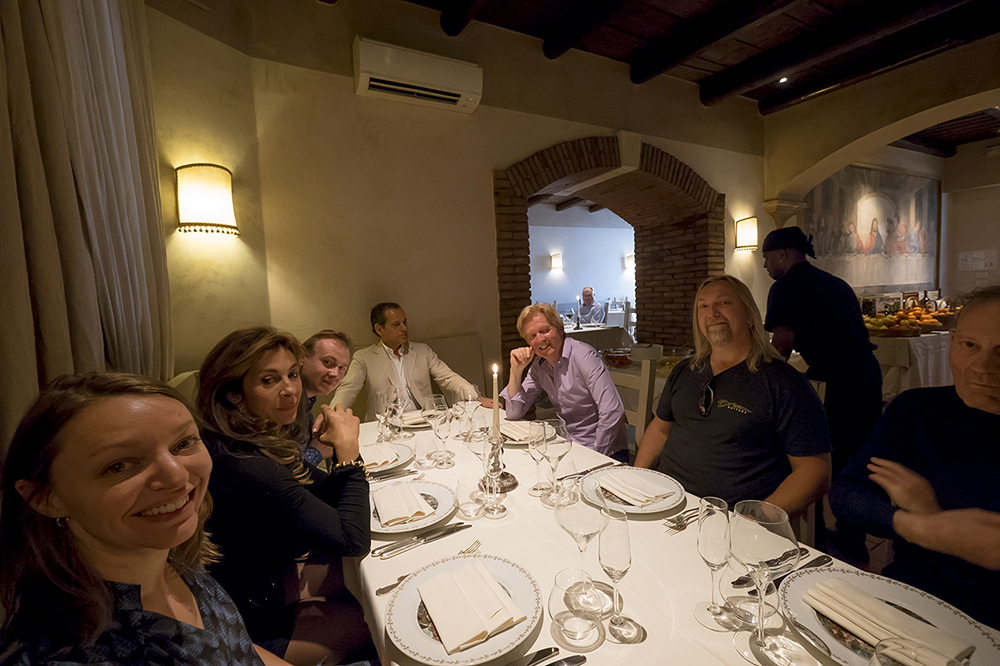 Food and drink in Verona, my daughter Becky on the far left.
Food and drink in Verona, my daughter Becky on the far left.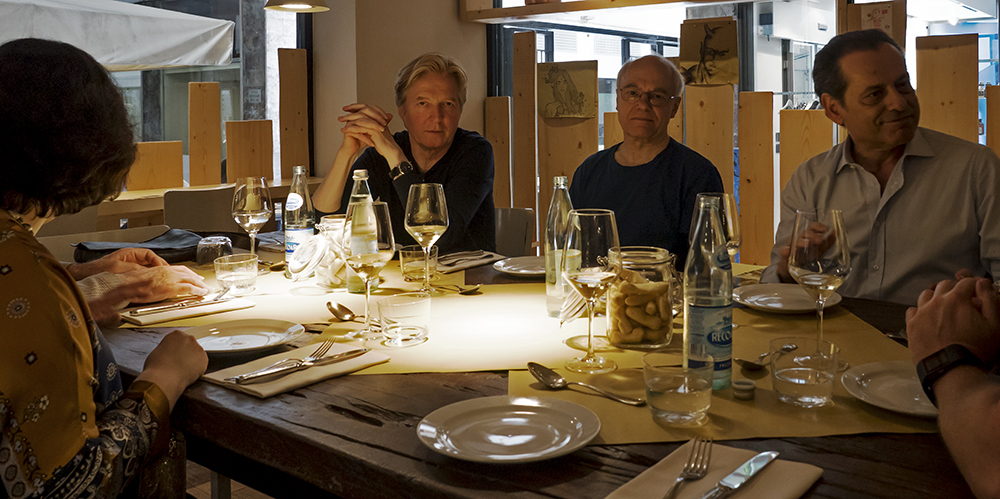 W
W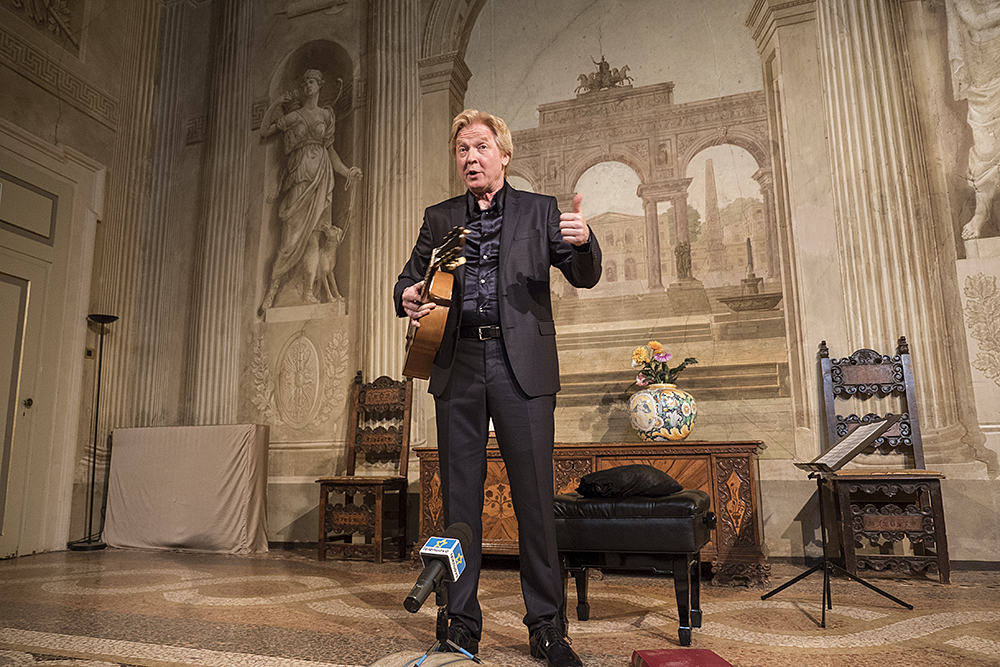 Wulfin Lieske with La Leona at the concert
Wulfin Lieske with La Leona at the concert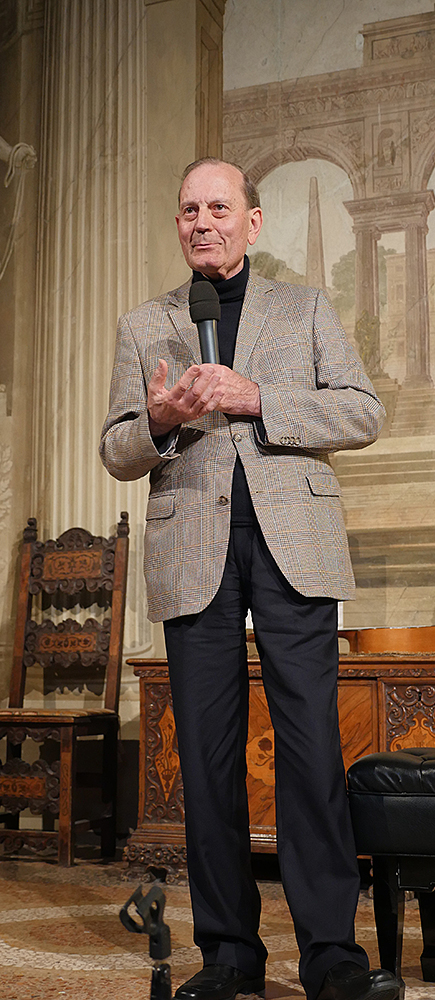
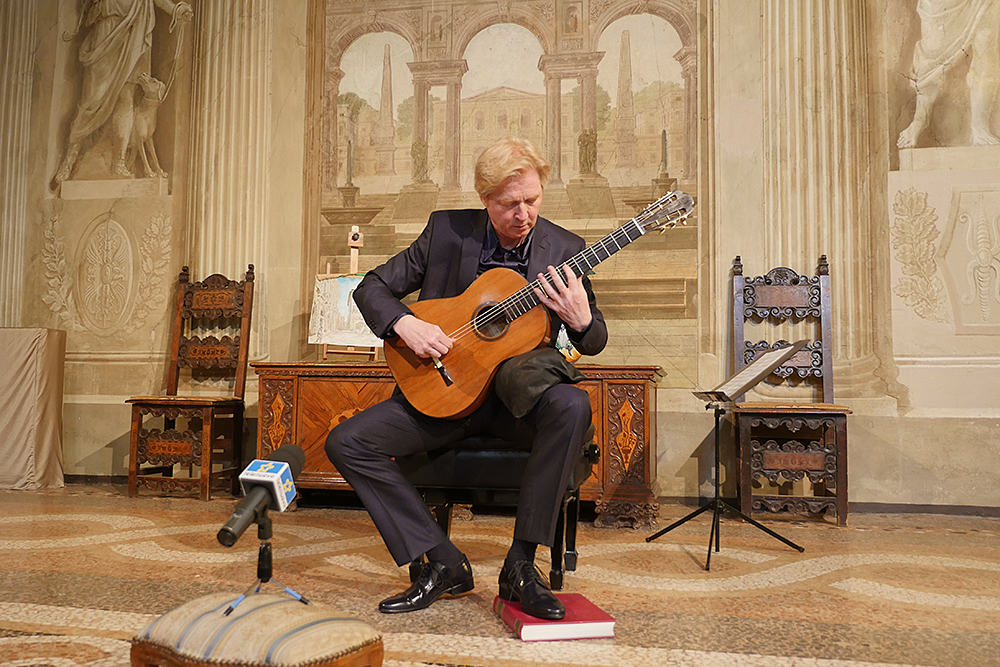
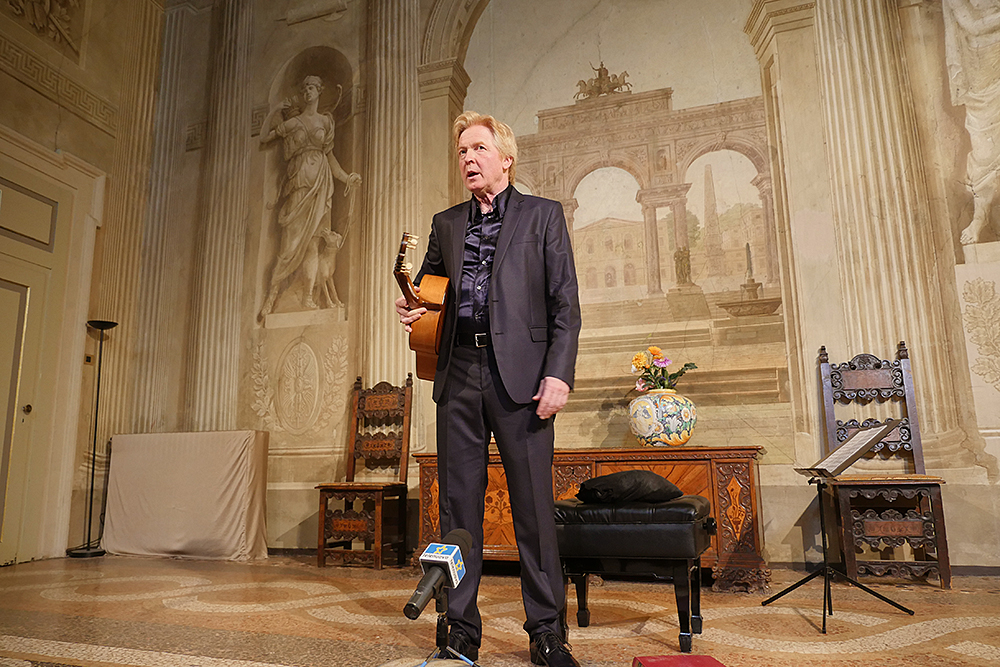
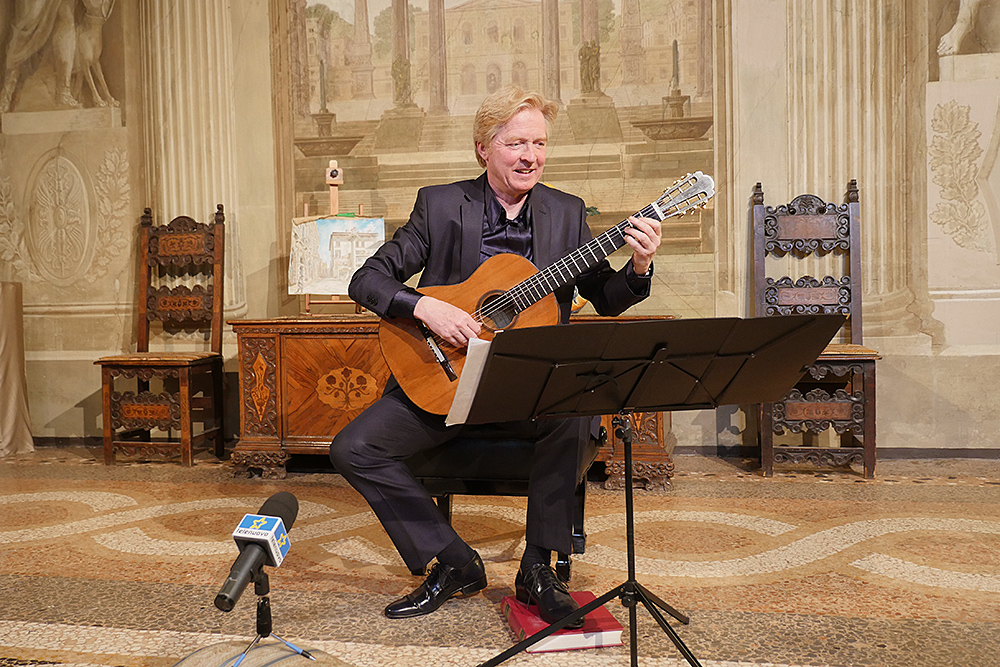
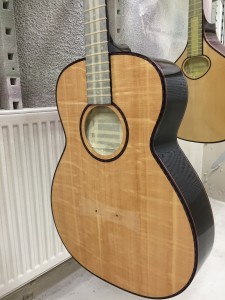 D guitar in the spraybooth
D guitar in the spraybooth